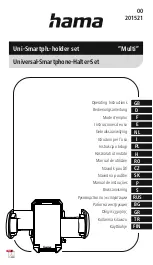
3.4.7.3
Average filter
Using the mean filter, a blockwise (not moving) arithmetic average is calculated from
the configured number of scans and then outputted. The big advantage when using this
filter: Potential noise, i.e. minimal deviation of values, is reduced, which also lowers the
quantity of data.
15 m
17 m
Figure 14: Without the mean filter: The device
detects and processes all received signal val‐
ues.
Ø 16 m
Figure 15: Using the mean filter: The device
calculates an average value from several sig‐
nal values.
3.4.8
RSSI values
RSSI (Received Signal Strength Indicator) is the measure of the signal strength that the
device receives. This value is calculated for every measurement. The device therefore
provides, for every echo signal, an associated RSSI value for the signal strength.
The resolution of the RSSI data output can be switched between 8 bit and 16 bit.
•
8 bits
: The RSSI values have a resolution of 8 bits with whole-number values
between 1 and 255, where 1 represents the weakest signal and 254 the strongest
signal (e.g., with a reflector). A value of 255 means "blinded".
•
16 bits
: The RSSI values have a resolution of 16 bits with whole-number values
between 1 and 65,535, where 1 stands for the weakest signal and 65,534 for the
strongest signal (e.g. with one reflector). A value of 65,535 means “dazzled”.
The value 0 (zero) means that the received energy was too low to produce a valid
measured value. A valid distance measurement has at least an RSSI value of 1.
If the RSSI value is 0, then no distance measurement is possible. There can be two
reasons for this:
•
The target object lies outside the sensing range.
•
The target object has an extremely low remission.
Please note that white paper can have very similar values as a reflector at a short
distance.
The RSSI values are sensor-specific, relative values that can vary slightly between
different devices and during the service life of the device.
3.4.9
Synchronization of the external clock and device clock
For precise control, the contour data of the device and the calculations in the external
computer must be synchronized as accurately as possible in time.
The measurement data from the device is provided with the internal time stamp. The
internal time stamp in the device is a 32-bit counter which increases in increments of 1
every 1 ms.
The scan data output starts at -180°.
PRODUCT DESCRIPTION
3
8026338/0000/2022-02-15 | SICK
O P E R A T I N G I N S T R U C T I O N S | LRS4000
19
Subject to change without notice
















































